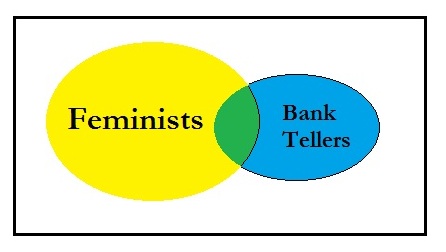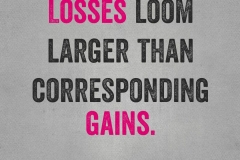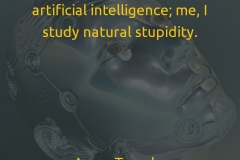The Conjunction Fallacy

Ventral Stream by Henrietta Harris
Linda is 31 years old, single, outspoken, and very bright. She majored in philosophy. As a student she was deeply concerned with issues of discrimination and social justice, and also participated in anti-nuclear demonstrations. Which choice is more probable?
- Linda is a bank teller
- Linda is a bank teller and is active in feminist movement
According to the laws of probability, the latter one must be less likely than the other one, as for it to be true, it needs two conditions to be met: first, Linda must be a bank teller and then she must also be a feminist of some sort (See the Venn diagram). Yet, around 90% of the people said the latter description was more likely to be true.

This is known as the conjunction fallacy or the Linda problem and it is a source of behavioral bias in decision making. It was identified and named by Amos Tversky and Daniel Kahneman in 1983. The term refers to the tendency to think that a combination of two events is more probable to happen than each of those events happening individually. In contrast, the conjuction of two separate events cannot be larger than either one.
Statistics tells the same story, only in its own language:
P(X) ≥ P(X&Y)
P(Y) ≥ P(X&Y)
The possibility of X and Y being true at the same time, will always be less than or equal to the probaility that X is true. Or Y is true.
Similarly, here’s another experiment done by the same scholars in 1983:
“Consider a regular six-sided die with four green faces and two red faces. The die will be rolled 20 times and the sequence of greens (G) and reds (R) will be recorded. You are asked to select one sequence, from a set of three, and you will win $25 if the sequence you choose appears on successive rolls of the die.”
- RGRRR
- GRGRRR
- GRRRRR
65% of the participants in this experiment chose the second sequence as a reasonable choice since most of the dice is green and the second choice contains more Gs than the other ones. However, the first choice is one letter shorter than the other two and it is more possible to happen.
Conjunction Fallacy, as Kahneman believes, rises because people tend to give more weight to the evidence at hand. In real world situations, this is why we give great weight to the stories our friends, family or colleagues tell us rather than the same stories narrated by authorities. For instance, if your friend tells you that the stock market is plummeting and investors are at great risk, you will probably give more importance to his words rather than relying on indices such as the Dow Jones index or alike.
Also watch
Further Reading
– Less Wrong: Conjunction Fallacy
– Linda the Bank Teller Case Revisited


